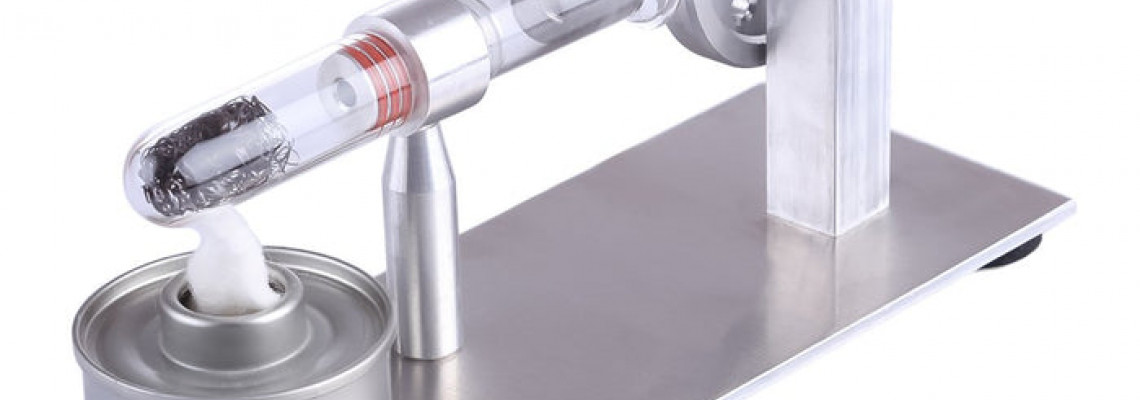
How does Thermo Acoustic Engine Work?
This single-cylinder thermoacoustic engine is powered by a small flame of methylated spirits (denatured alcohol). When fully warmed up, the ideal running speed is 2700 rpm. This is the quickest thermoacoustic engine we are aware of.
The thermo acoustic engine is also known as the resonant engine, lag engine, lamina flow engine, and travelling wave engine. With its clear main tube, this engine elegantly and brilliantly illustrates the fundamentals of these engines.
How does it work?
The thermo-acoustic engine converts sound waves into motion. A stack of coiled material is heated at one end while the other end is left cool to produce sound waves.
A little spirit burner powers the engine. The coiled stack' is heated at the end to create a bouncing pressure wave inside the tube. The 'choke', which lowers the tube's bore, is an essential component of the thermo-acoustic engine.
Variations in pressure ultimately drive the engine; the piston is pushed outward during expansion and drawn inward during contraction.
To start the engine, the flywheel must be slightly pushed. In the absence of a slight push, the standing wave's pressure and velocity stay balanced. Shifting the flywheel alters the balance, enabling the cyclic changes to occur.